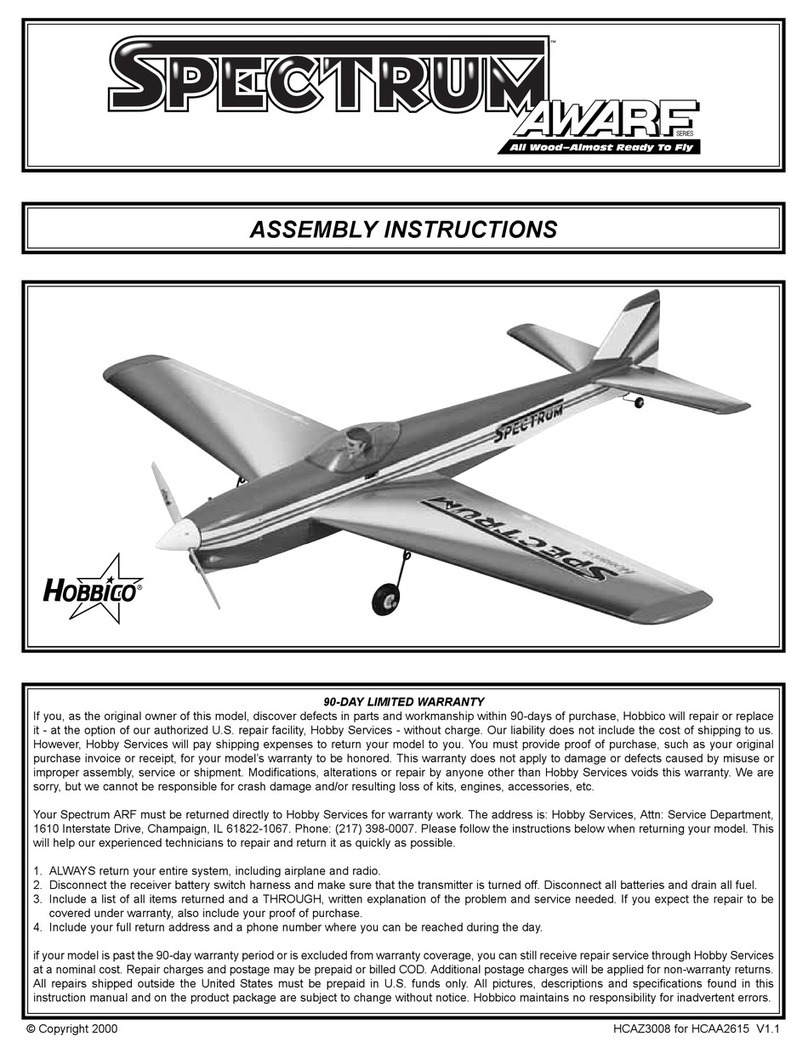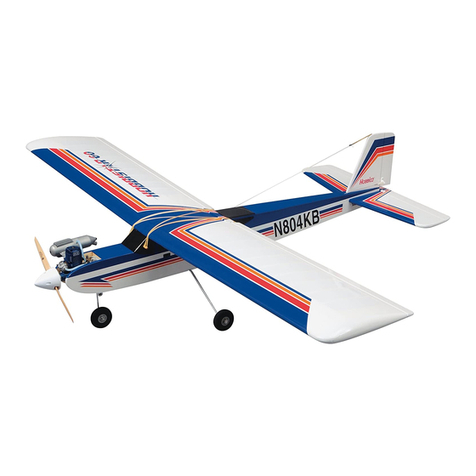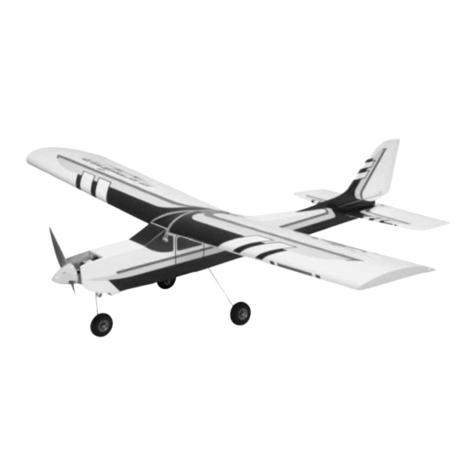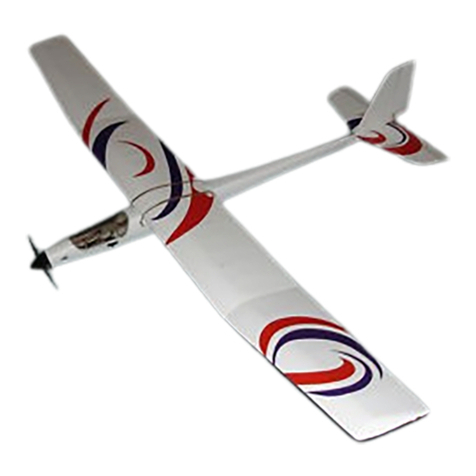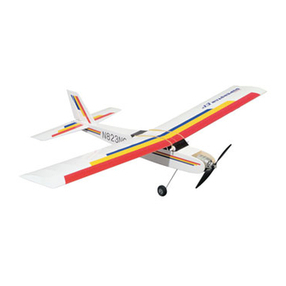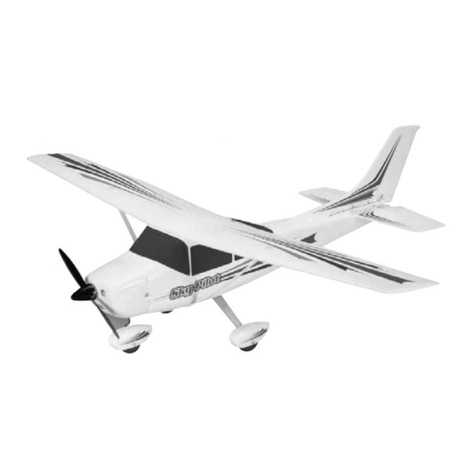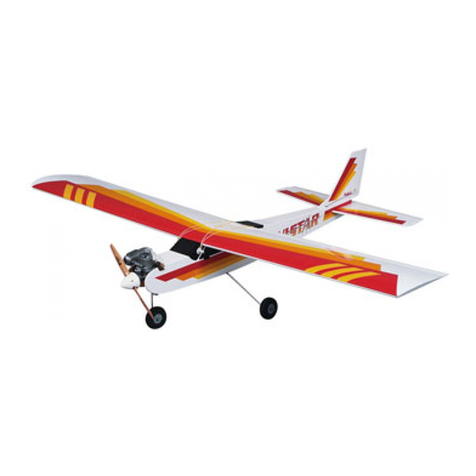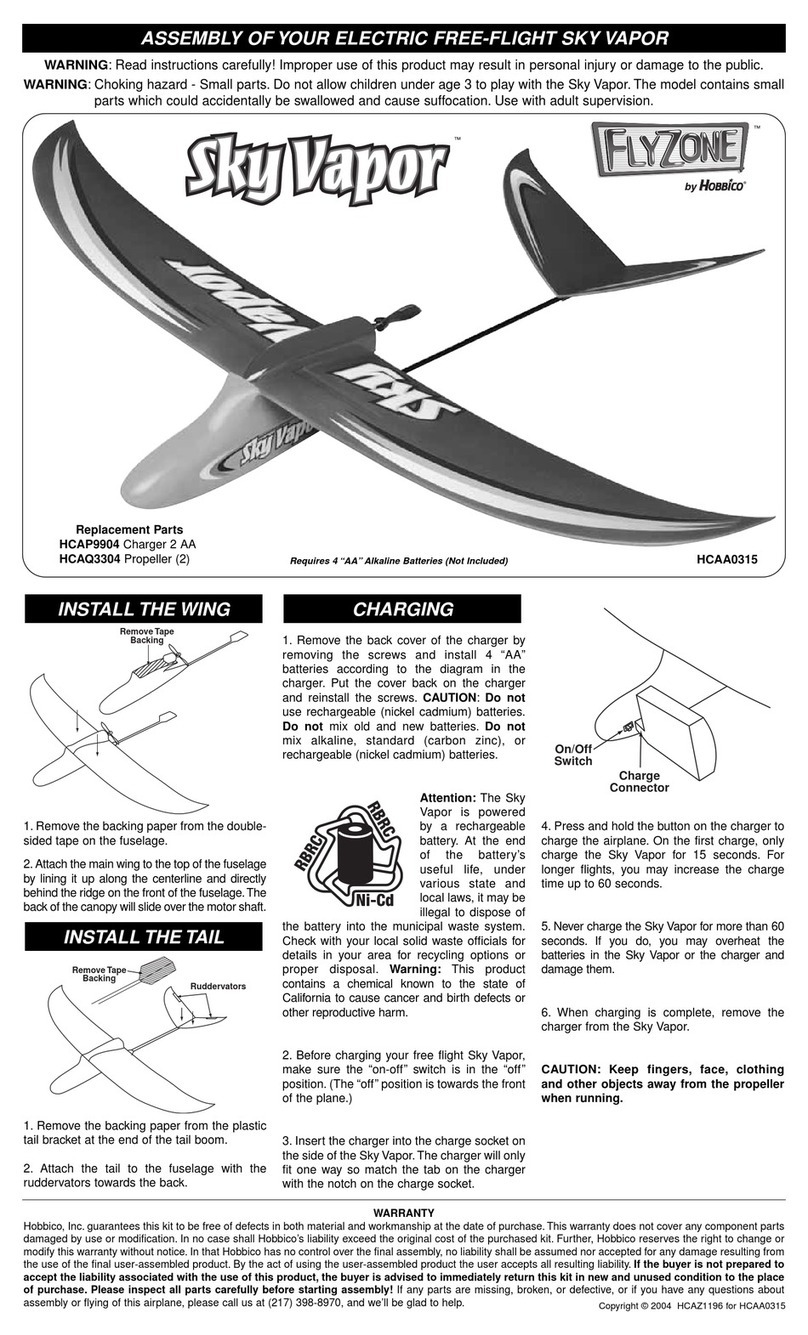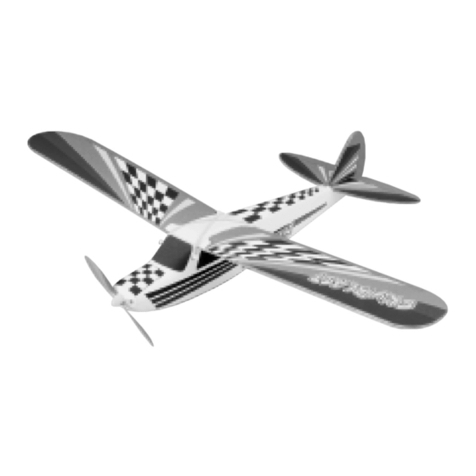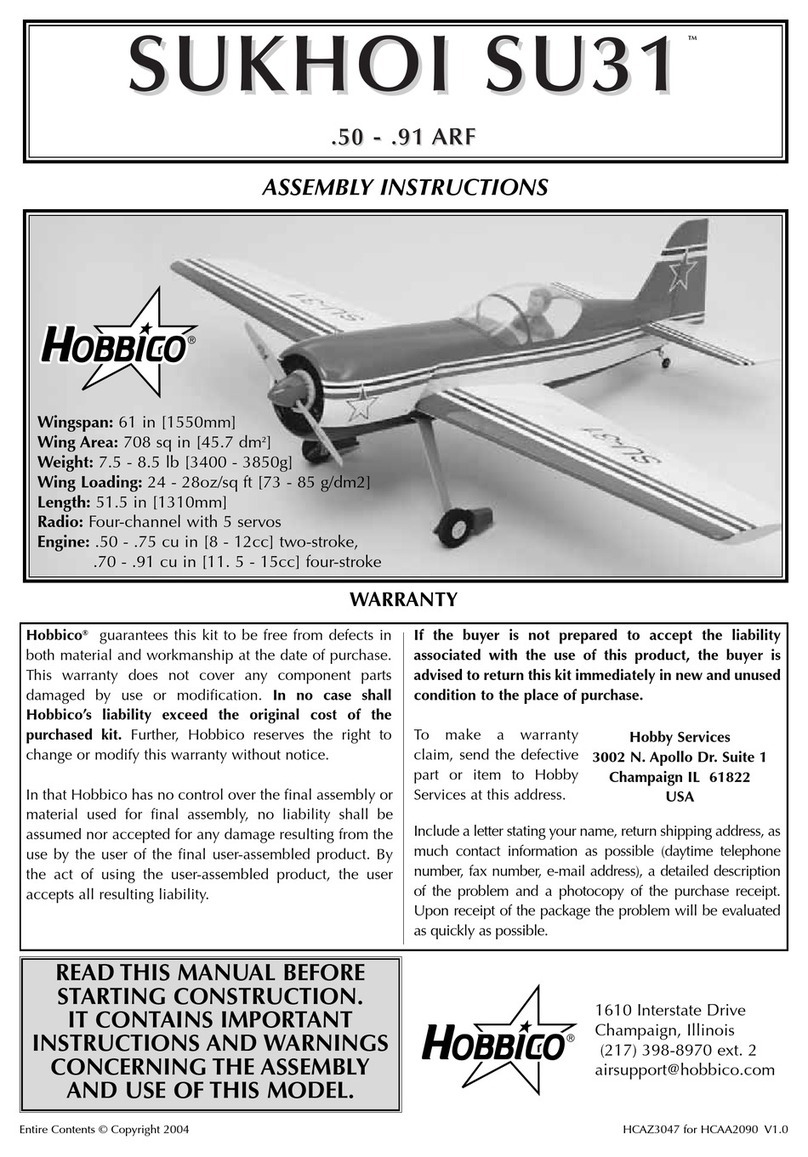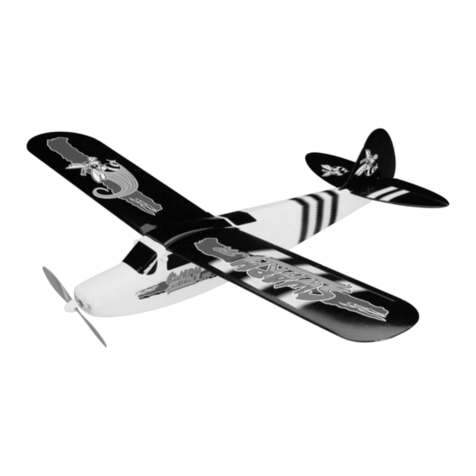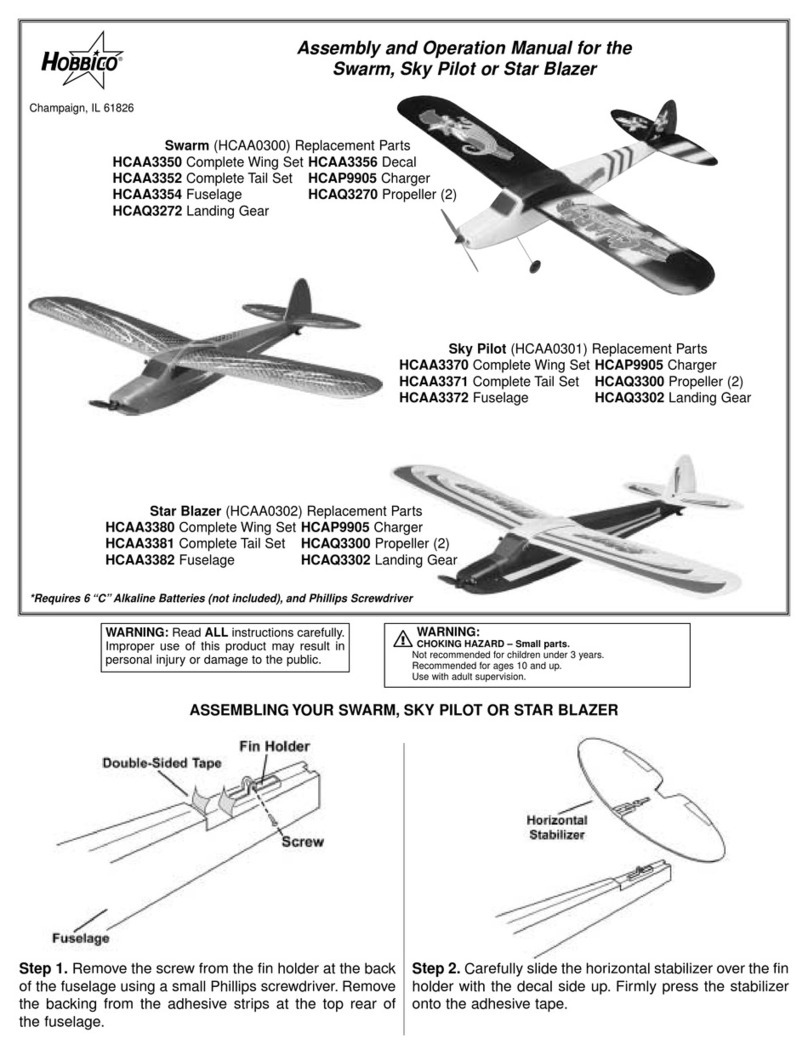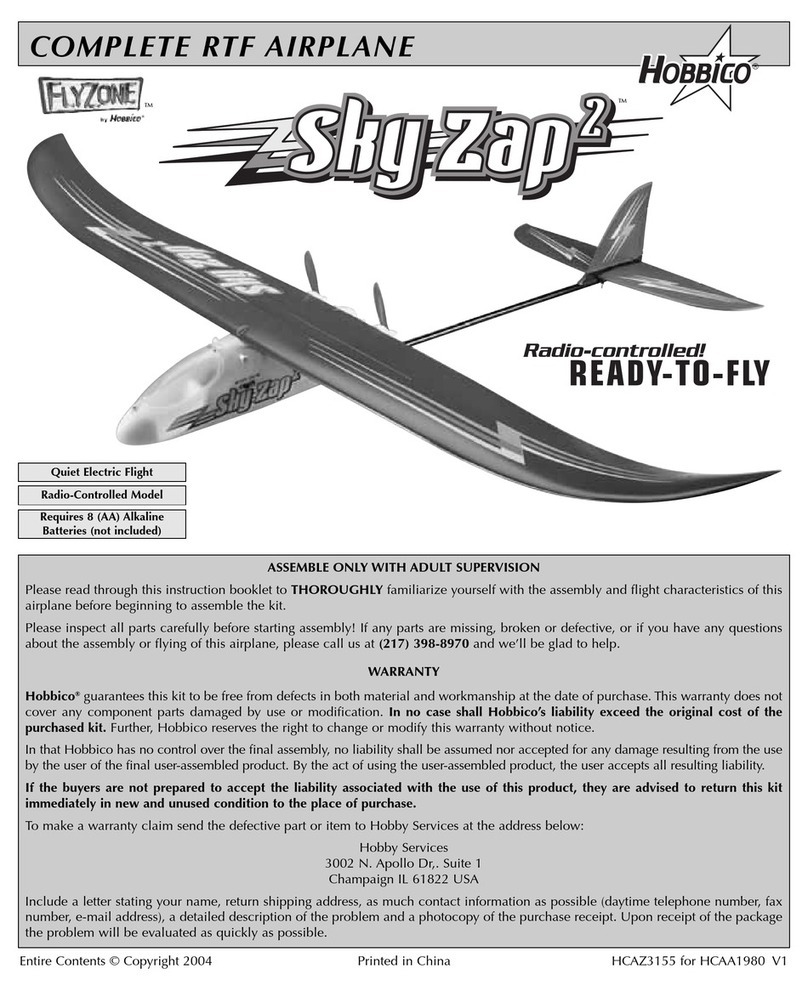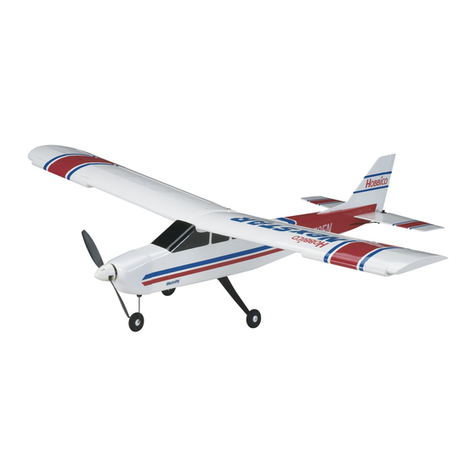4. IMPORTANT! NEVER LEAVE A CHARGING
BATTERY
UNATTENDED.
5. During charging, eriodically feel the battery to see if it is
starting to warm u . A warm (but not hot) battery ack is a sign
that it is fully charged. Once the ack is
warm, disconnect it from
the charger. De ending on
how much charge was already in the
ack, you may have to disconnect the battery before the 20
minutes are u .
6. Always disconnect the charger from the 12-volt cigarette
lighter socket in your vehicle when finished charging.
7. After each flight, remove the battery ack from the air lane
and allow it to cool com letely before recharging.
1. Never leave a charging battery unattended.
2 Never let the battery charge until it feels hot. A hot battery is an
overcharged battery. Only allow the battery get warm to the
touch.
3. If your battery is not com letely discharged before charging,
the charging time may take less than 20 minutes. Again, only let
the battery get warm to the touch – not hot.
4. We recommend that your vehicle’s engine is shut off during
charging. Charging the battery while your vehicle’s engine is
running increases the chance of overcharging the battery.
5. If you ever use a different battery charger, charge this battery
ack only at a maximum charge rate of 1/2 am . A higher charge
rate will charge the battery ack too quickly and heat u the
wires.
6. A ro erly cared for battery ack will last a long time. If the
battery ack is continually overcharged or charged at too high of
a rate, the life of the battery ack will be shortened.
Be careful to avoid overcharging the battery! When you lug the
battery into the charger there is no way to know how much
charge is left in the battery (unless you have just com leted a
flight in which the battery was run all the way down). If you ut
too much charge into a battery, it will get very hot. This may result
in melting the lastic battery cover, damage to vehicle, and could
even cause the battery to ex lode.
ATTENTION: The roduct you have urchased is owered by
a rechargeable battery. At the end of its useful life, under
various state and local laws, it may be illegal to dis ose of this
battery into the munici al waste system. Check with your local
solid waste officials for details in your area for recycling
o tions or ro er dis osal.
This product co tai s a chemical k ow to the State of
Califor ia to cause ca cer a d birth defects or other
reproductive harm.
Electro ic Speed Co trol with Auto Cut-off: This unit controls
the s eed of the motor. Also it monitors the battery voltage and
turns off the motor so that there will be enough battery ower to
o erate the radio while you glide and land the air lane.
Fi : Vertical fin and rudder located at the rear of the lane.
Motor: The motor rotates the ro to rovide thrust.
NiMH Battery: Rechargeable batteries which are used as ower
for the air lane.
Receiver (RX): The radio unit in the air lane which receives the
transmitter signal and relays the control to the servos.
Servos: The electronic/mechanical device which moves the
control surfaces of the air lane according to the commands of
the transmitter/receiver.
Stab: Horizontal stabilizer with elevator, located at the rear of
the lane.
Switch: Turns on the ower to the receiver, servos and motor.
Start Butto : With the switch on, ressing the start button arms
the motor. To turn the motor on, move the throttle lever on the
front of the transmitter to the right. Notice that the motor RPM
increases gradually. To turn the motor off, move the throttle lever
to the left.
GLOSSARY
CHARGING THE BATTERY – WARNING
SAFETY PRECAUTIONS FOR
CHARGING BATTERIES
3

